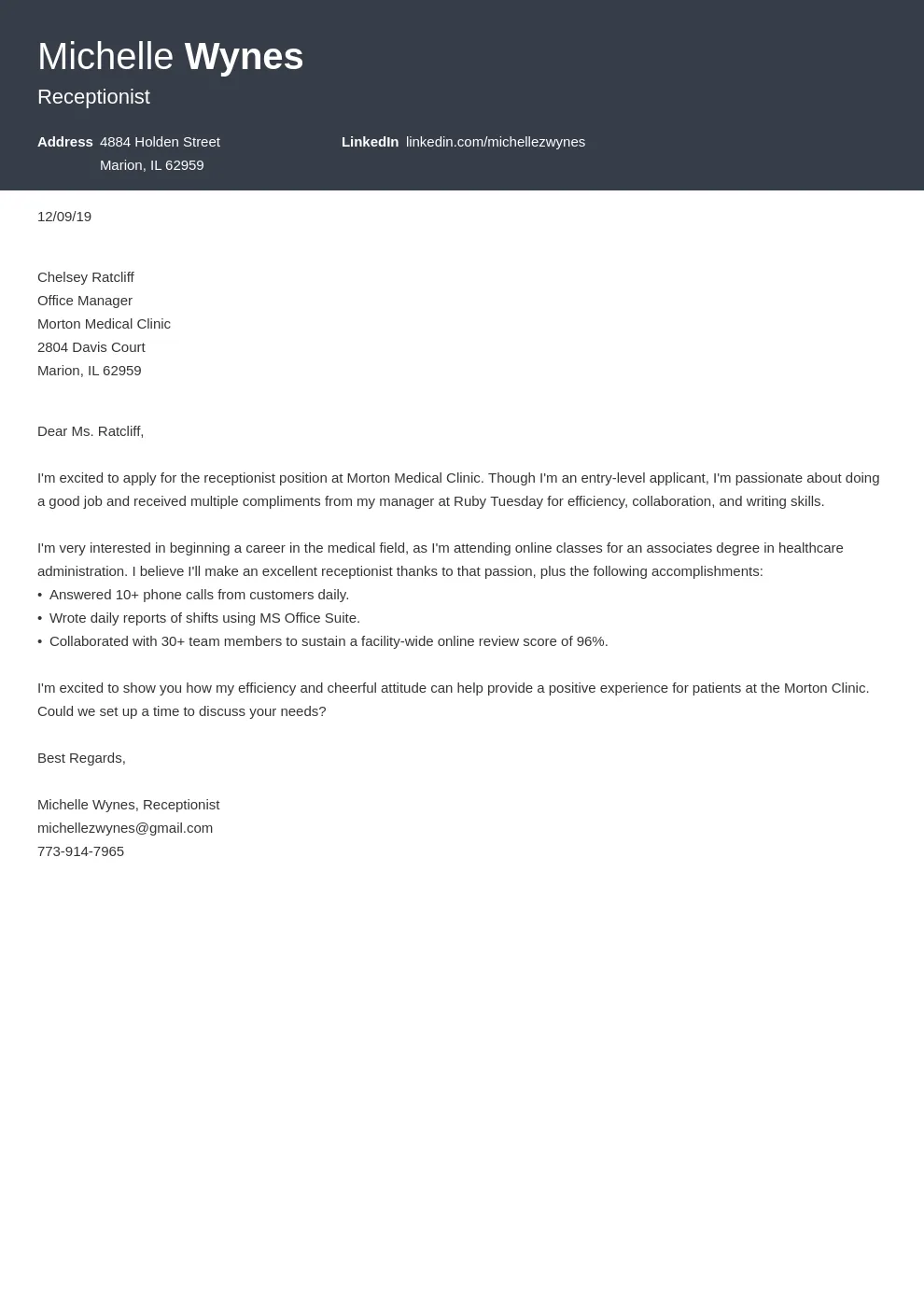Understanding the Importance of Cover Letters
In the competitive world of job applications, a well-crafted cover letter can be your secret weapon. Many job seekers underestimate the power of a cover letter, viewing it as a mere formality. However, for entry-level positions, where experience might be limited, a cover letter provides a crucial opportunity to showcase your personality, enthusiasm, and potential. It’s your chance to connect with the hiring manager on a personal level, demonstrating that you’re more than just a list of qualifications on a resume. This document allows you to paint a picture of who you are and how you can contribute to the company, making it a vital tool in your job search arsenal. The initial impression you make through your cover letter can significantly impact your chances of landing an interview and ultimately, the job itself.
Why a Cover Letter Matters
A cover letter matters because it goes beyond the surface-level information presented in your resume. It allows you to explain why you’re interested in the specific role and the company. Your resume provides a snapshot of your skills and experiences; the cover letter allows you to bring that snapshot to life, adding context and demonstrating your genuine interest. For entry-level candidates, this is particularly important, as it shows a willingness to learn and grow, even without extensive professional experience. A cover letter also allows you to address any gaps in your resume, providing explanations or elaborations that aren’t feasible in the structured format of a resume. By highlighting your passion for the field and the company, you can set yourself apart from other applicants.
First Impressions That Count
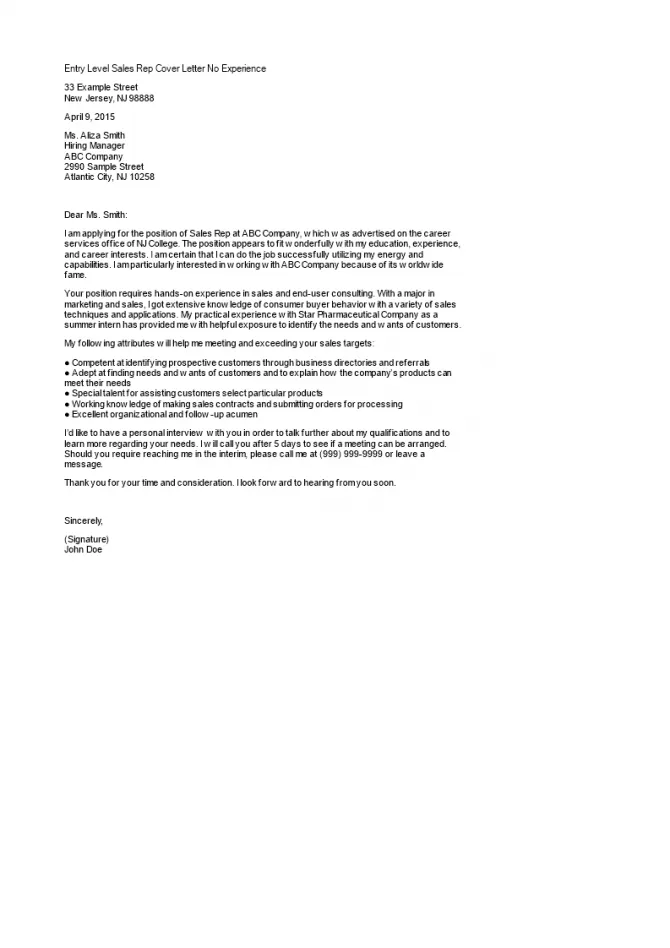
Your cover letter is often the first impression a potential employer has of you, so it’s critical that it is professional, well-written, and engaging. Ensure your contact information is correct and easily accessible. The tone of your letter should be professional yet enthusiastic. Avoid generic greetings such as “To Whom It May Concern” and research the name of the hiring manager or the person to whom you should address the letter. This personalization shows that you’ve taken the time to understand the company and the specific role. The opening paragraph should immediately grab the reader’s attention, clearly stating your interest in the position and the company. Make sure to proofread your cover letter meticulously to catch any spelling or grammatical errors as they can undermine your credibility.
Key Components of a Compelling Cover Letter
A compelling cover letter has several key components that work together to create a strong impression. Start with your contact information including your name, address, phone number, and email. Then, include the date and the recipient’s information the hiring manager’s name, title, company name, and address. Following this, craft a strong opening paragraph, stating the specific position you’re applying for and how you learned about it. The body of the letter should highlight your transferable skills and how they align with the job requirements. Quantify your accomplishments whenever possible by providing concrete examples and measurable results. Conclude with a powerful closing paragraph restating your interest and including a call to action. Finally, ensure your letter is formatted professionally with appropriate spacing and fonts. Remember to proofread!
Your Contact Information and the Date
At the top of your cover letter, clearly include your contact information. This should include your full name, address, phone number, and a professional-looking email address. Make sure the contact information is accurate and up-to-date; as you want potential employers to easily reach you. Following your contact information, include the date. This shows when you submitted your application and helps the recipient keep track of the application process. The date should be formatted correctly and consistent with standard business letter conventions, which typically include the month, day, and year. Keep your format consistent with your resume to maintain a cohesive and professional look.
The Recipient’s Information
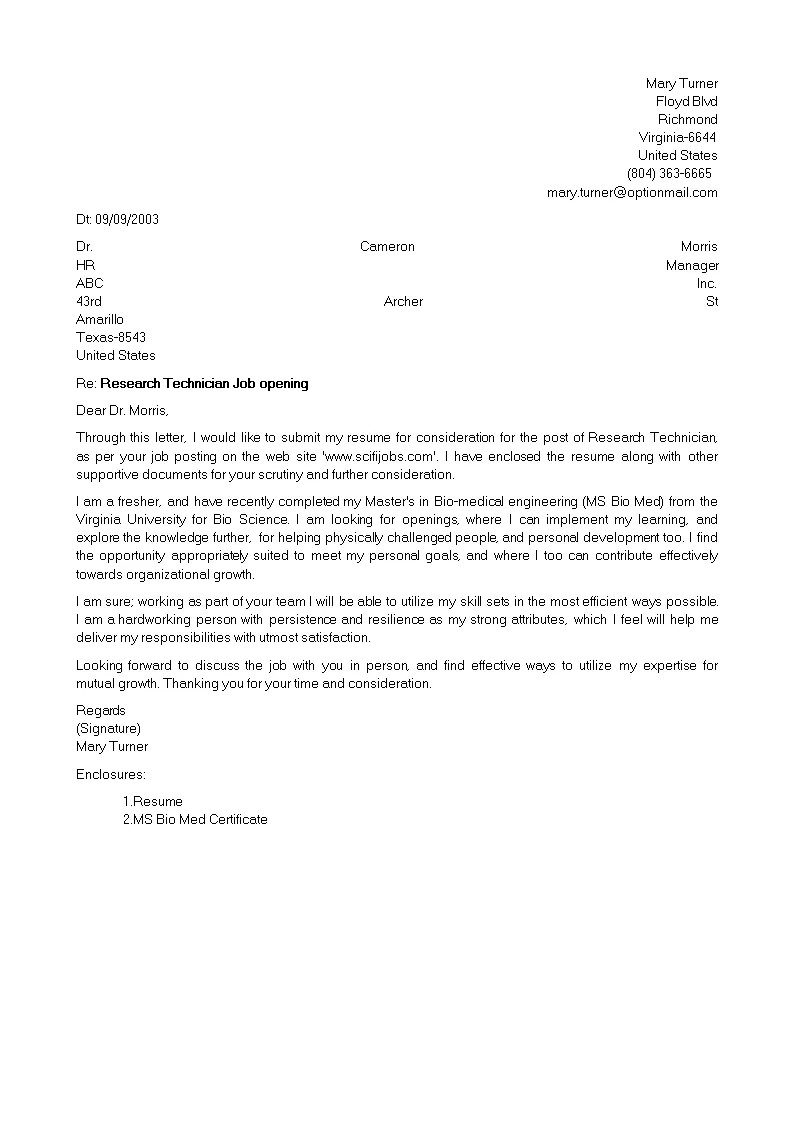
Researching and including the recipient’s information is crucial. Whenever possible, find out the name of the hiring manager or the person who will be reviewing your application. Addressing your cover letter to a specific person shows that you’ve put in the effort to personalize your application and are genuinely interested in the role. If you cannot find a name, use the title of the hiring manager or the department (e.g., “Hiring Manager, Marketing Department”). Include the person’s title, the company name, and the company’s address. If the address is not available, you can often find it on the company’s website. Properly formatting the recipient’s information demonstrates your attention to detail and professionalism.
Crafting a Strong Opening Paragraph
The opening paragraph of your cover letter is your first chance to make a positive impression. It should immediately grab the reader’s attention and clearly state the position you’re applying for. Mention where you found the job posting (e.g., online job board, company website, referral) and briefly explain why you’re interested in the company and the role. Avoid generic statements like “I am writing to express my interest.” Instead, try something more engaging, such as “I am excited to apply for the Marketing Assistant position at [Company Name], as I am passionate about [related field or interest] and impressed by [Company’s achievement].” This shows enthusiasm and provides a specific reason why you’re interested.
Highlighting Transferable Skills
Even if you lack direct experience, you likely possess transferable skills that are valuable to employers. These are skills you’ve gained through previous jobs, volunteer work, academic projects, extracurricular activities, or even personal experiences. Identify skills such as communication, teamwork, problem-solving, time management, organization, leadership, and adaptability. Highlight these skills by providing examples of how you’ve used them effectively in different situations. The goal is to show that you can apply these skills to the new role. It’s also a good idea to tailor the skills you highlight to the specific requirements of the job description, making sure they align with the employer’s needs.
Identifying Your Transferable Skills
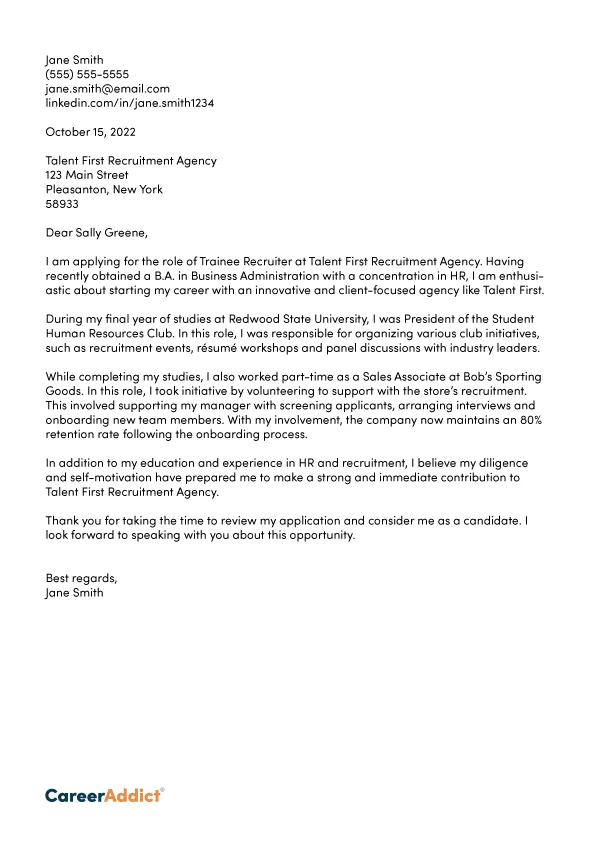
To identify your transferable skills, carefully review the job description and make a list of the skills and qualities the employer is seeking. Then, brainstorm your past experiences and identify instances where you’ve demonstrated these skills. Think about projects you’ve completed, roles you’ve held, and challenges you’ve overcome. For instance, if the job requires strong communication skills, think about times you’ve effectively communicated with a team, presented information, or resolved conflicts. If it emphasizes teamwork, recall instances when you collaborated with others to achieve a common goal. Write down examples of how you have used these skills. This process is crucial for helping you frame your cover letter to make you look appealing to the hiring manager.
Quantifying Your Accomplishments
Whenever possible, quantify your accomplishments to make them more impactful. Instead of saying “I improved customer service,” say “I improved customer satisfaction scores by 15% by implementing a new feedback system.” Quantifiable results provide concrete evidence of your abilities and demonstrate the value you can bring to a company. Use numbers, percentages, and specific data to showcase your achievements. If you don’t have direct work experience, you can still quantify your accomplishments from other experiences. For example, “Led a team of five students to raise $1,000 for a charity” or “Managed social media accounts, resulting in a 20% increase in followers.” Such specific data increases the credibility of your claims.
Showcasing Your Enthusiasm and Fit
Your cover letter is an opportunity to showcase your enthusiasm for the role and the company. Express your genuine interest in the specific position, explain why you’re excited about the opportunity, and how it aligns with your career goals. Demonstrate your understanding of the company’s mission, values, and products or services. Explain how your skills and experiences make you a good fit for the company culture. Research the company’s recent news, projects, and achievements to demonstrate your interest. By conveying enthusiasm, you signal to the employer that you’re motivated and passionate about contributing to their team. Tailor your letter to show how your personality and skills align with the company’s culture.
Researching the Company Culture
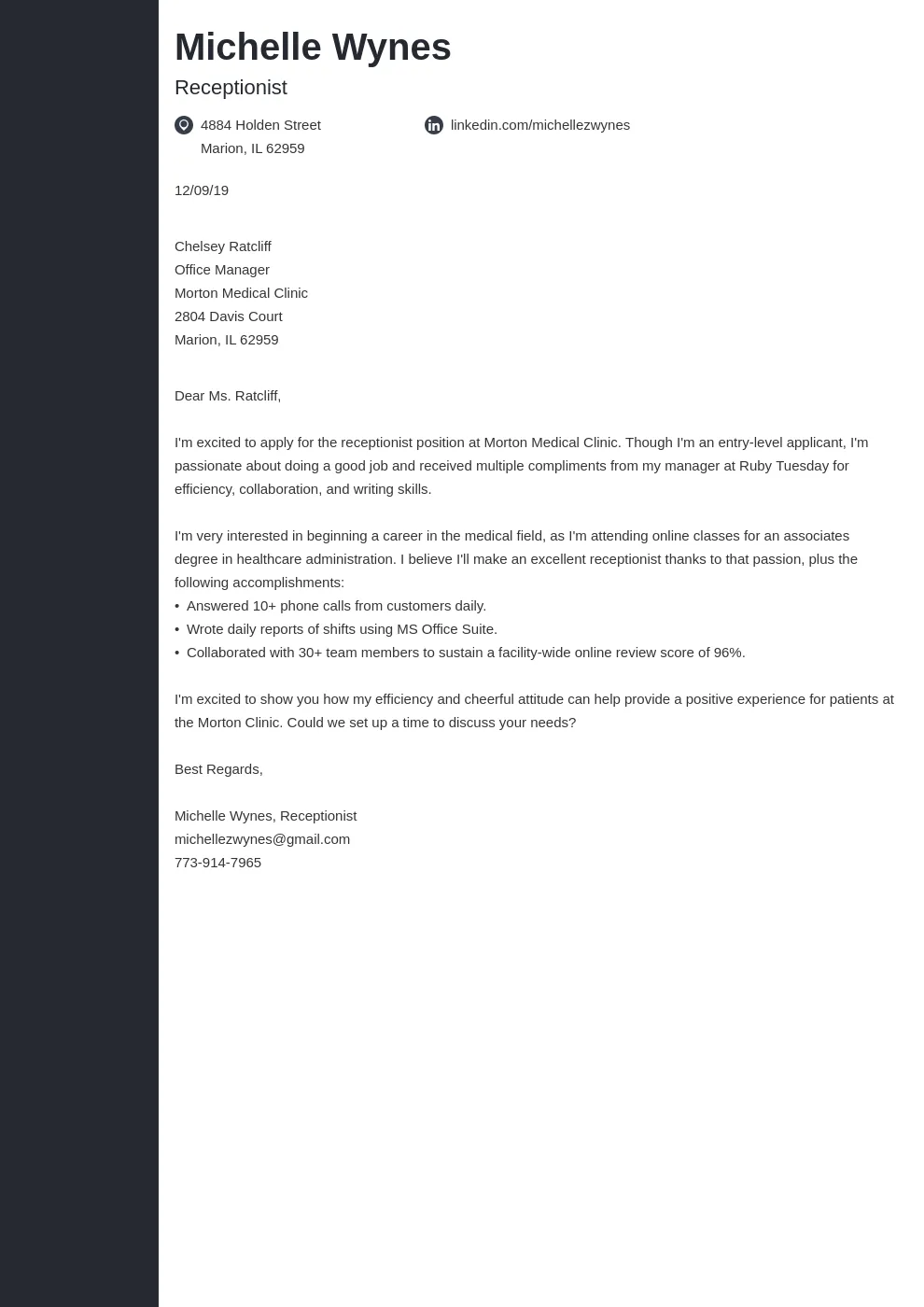
Researching the company culture is an essential step in tailoring your cover letter. Understanding the company’s values, mission, and work environment allows you to demonstrate how your skills and personality align with their culture. Start by visiting the company’s website and social media profiles to learn about their values, recent projects, and employee testimonials. Look for information about their work environment, team dynamics, and any awards or recognition they’ve received. Researching the company culture also shows that you’ve taken the time to understand the company’s needs and that you’re genuinely interested in the position. Incorporate information about the company’s values or mission into your cover letter to demonstrate your understanding.
Tailoring Your Letter to the Role
Every cover letter should be tailored to the specific job you’re applying for. Generic cover letters are easily spotted by hiring managers and can diminish your chances of getting an interview. Carefully review the job description, and identify the key requirements and skills the employer is seeking. Highlight the skills and experiences that align with these requirements, providing specific examples of how you’ve demonstrated them in the past. Show how your transferable skills relate to the job’s responsibilities. Avoid using a generic template and instead, customize your letter to address the company’s specific needs and expectations. This personalization demonstrates that you’ve taken the time to understand the role and that you’re genuinely interested in the opportunity.
Writing a Powerful Closing Paragraph
The closing paragraph is your final opportunity to make a strong impression and encourage the hiring manager to contact you. Restate your interest in the position and summarize your key qualifications. Express your enthusiasm for the opportunity to contribute to the company. It is crucial to include a call to action, indicating your availability for an interview and providing your contact information. End with a professional closing, such as “Sincerely” or “Best regards,” followed by your typed name. Avoid clichés and aim to leave a lasting positive impression that encourages the reader to move forward with your application.
Call to Action
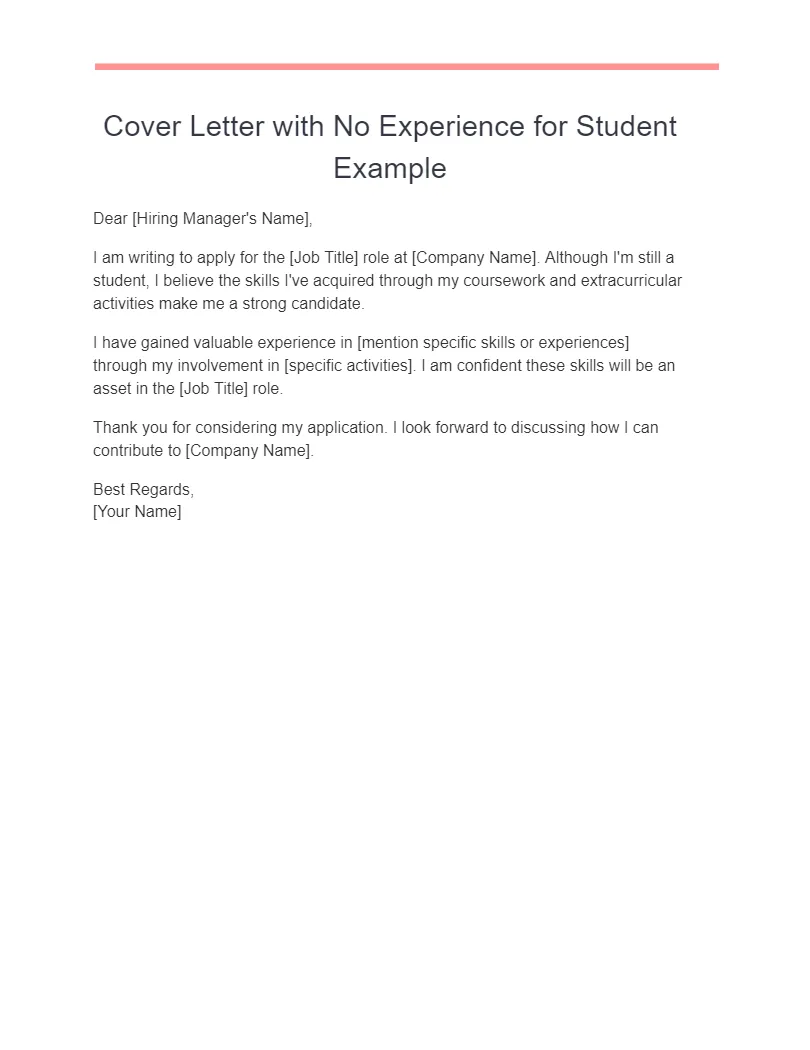
A strong call to action is a key component of your closing paragraph. It tells the hiring manager what you want them to do next. Clearly state your availability for an interview and provide your contact information. Make it easy for the hiring manager to reach you. For example, you could write “I am available for an interview at your earliest convenience. You can reach me by phone at (555) 123-4567 or by email at your.email@example.com.” By including a clear and concise call to action, you increase the likelihood of receiving a response and moving forward in the hiring process.
Formatting and Proofreading
The format of your cover letter and the quality of your writing are just as important as the content. Ensure that your cover letter is easy to read and visually appealing. Use a professional font, such as Times New Roman or Arial, and maintain a consistent font size (typically 11 or 12 points). Use standard business letter formatting, including single-spacing within paragraphs and double-spacing between paragraphs. Keep your letter concise, ideally no more than one page. Proofread your cover letter meticulously for any spelling or grammatical errors, as these can create a negative impression. Use a spell-checker and grammar-checker, but don’t rely on them entirely. Carefully read your letter multiple times, and ideally, have someone else proofread it as well.
Proofreading Best Practices
Proofreading is essential to ensure your cover letter is free of errors. Start by using spell-check and grammar-check tools. However, don’t rely solely on these tools, as they might not catch every mistake. Read your cover letter carefully multiple times. Read it aloud to catch any awkward phrasing or grammatical errors. Ask a friend, family member, or career counselor to proofread your letter as a fresh pair of eyes can catch mistakes you might have missed. Pay close attention to details, such as proper punctuation, correct capitalization, and consistent formatting. Thorough proofreading shows professionalism and attention to detail, which are highly valued by employers.
Formatting for Readability
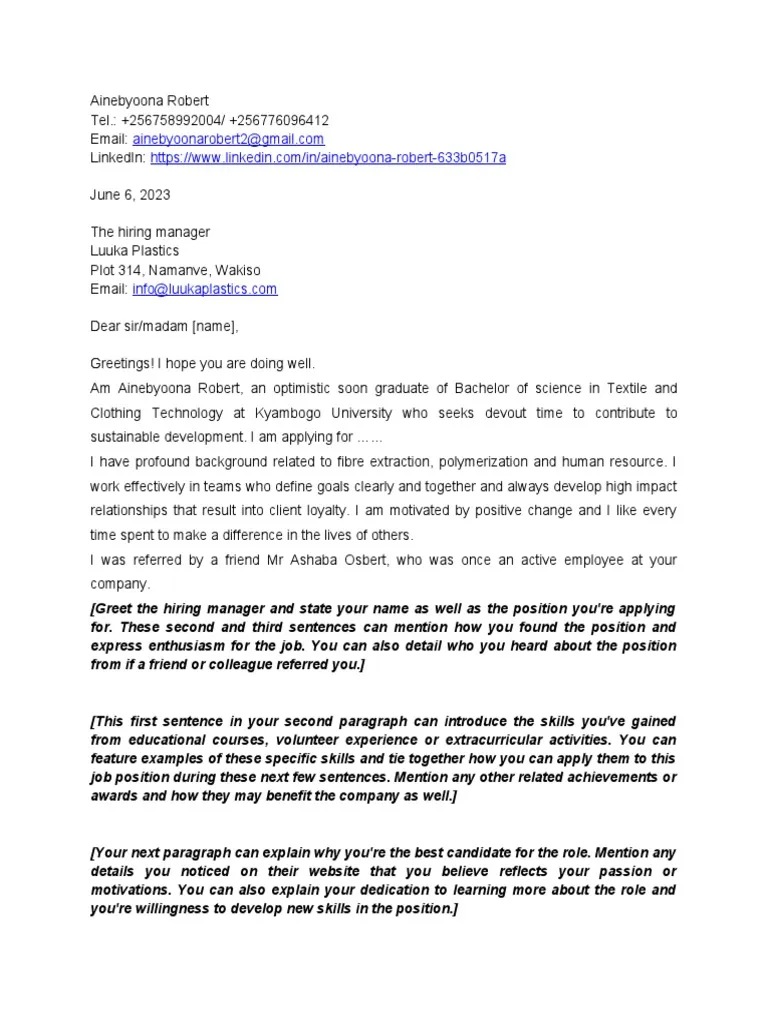
Formatting your cover letter for readability is crucial, as it makes it easier for the hiring manager to read and understand your qualifications. Use a clear, professional font, and maintain a consistent font size. Use single-spacing within paragraphs and double-spacing between paragraphs. Keep your paragraphs concise and to the point. Break up large blocks of text by using bullet points or short, easy-to-read sentences. Use headings and subheadings to organize your content and guide the reader through your letter. Ensure your contact information is clearly displayed at the top of the letter. A well-formatted cover letter looks professional and demonstrates your attention to detail.
Common Mistakes to Avoid
Avoiding common mistakes can significantly increase your chances of a successful cover letter. One common mistake is ignoring the job description. Tailor your letter to address the specific requirements and qualifications listed in the job posting. Avoid using generic language that could apply to any job. Instead, use specific examples and details that highlight your unique skills and experiences. Lack of enthusiasm is another mistake. Show your genuine interest in the role and the company. Avoid negative language or making excuses for your lack of experience. Proofread your letter carefully to catch any spelling or grammatical errors, which can undermine your credibility. By avoiding these mistakes, you can create a cover letter that makes a positive impression and showcases your potential.
Ignoring the Job Description
Ignoring the job description is one of the most critical mistakes to avoid when writing a cover letter. The job description is your primary guide for what the employer is looking for. Failing to address the specific requirements and keywords listed in the job description demonstrates a lack of attention to detail and an understanding of the role. Tailor your cover letter to highlight how your skills and experiences align with the job description. Use the same keywords and phrases that the employer uses to describe the role and its requirements. When you address the job description directly, you increase your chances of the hiring manager seeing your application.
Using Generic Language
Using generic language is another mistake to avoid. Generic cover letters often sound impersonal and lack the specificity to grab the reader’s attention. Avoid phrases that could apply to any job, such as “I am a hard worker” or “I am a team player.” Instead, provide specific examples and details that demonstrate your unique skills and experiences. For example, “I improved customer satisfaction scores by 15% by implementing a new feedback system.” Tailor your language to the specific role and the company, showing your understanding of their needs and expectations. This shows that you have taken the time to understand the company and demonstrate you want to stand out from other applicants.
Lack of Enthusiasm
A lack of enthusiasm can be a significant deterrent to hiring managers. Your cover letter should convey your genuine interest in the position and the company. Avoid sounding indifferent or uninspired. Express your excitement for the opportunity and explain why you’re interested in the role. Demonstrate your knowledge of the company’s mission, values, and recent achievements. Show how your skills and experiences align with the company’s culture. Enthusiasm signals to the employer that you’re motivated and passionate about contributing to their team. Showing passion may just give you an edge.
Seeking Feedback and Finalizing Your Letter
Before submitting your cover letter, seek feedback from others. Ask a friend, family member, career counselor, or mentor to review your letter and provide constructive criticism. Their feedback can help you identify any areas for improvement, such as unclear language, grammatical errors, or formatting issues. Consider their suggestions and revise your letter accordingly. Once you’re satisfied with the content and format, proofread your letter one final time to catch any remaining mistakes. Then, finalize your letter and save it as a PDF to preserve the formatting. By seeking feedback and finalizing your letter, you increase the chances of creating a cover letter that makes a strong impression and helps you land your first job.
